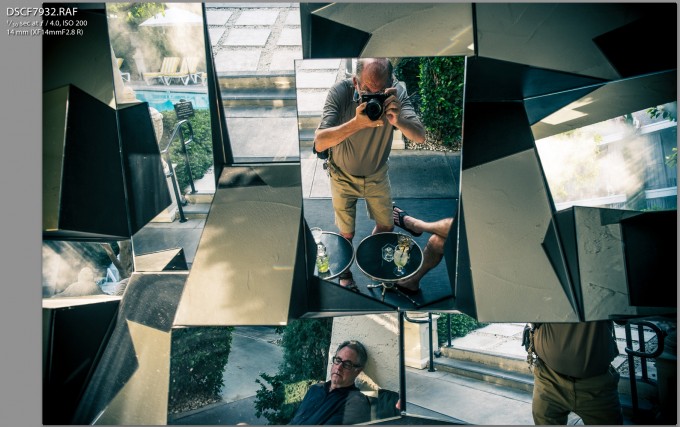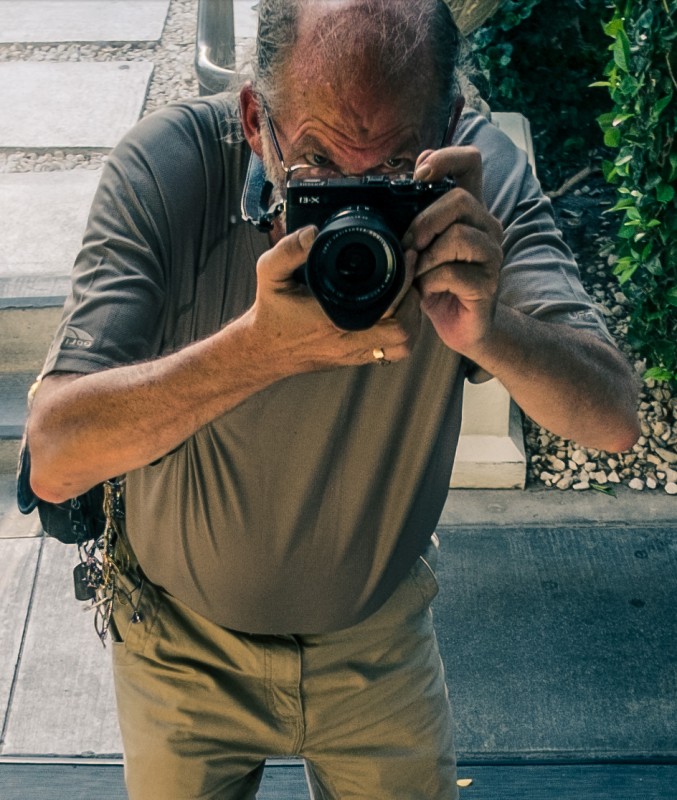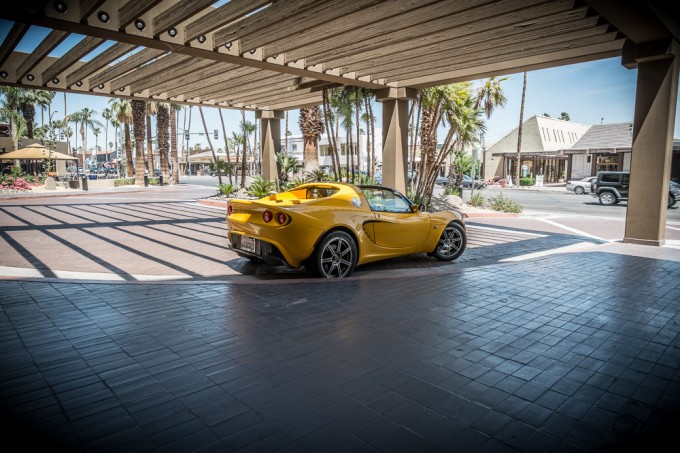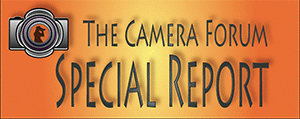
Fujinon XF 14mm f/2.8 R First Report
Last June, FujiFilm issued their lens development “roadmap” (see chart below) for the two XF mount cameras at the time, the XPro-1 and X-E1. I purchased my X-E1 with the highly regarded and most excellent 35mm f/1.4, deciding to place my bet on Fuji evolving this camera system. There was no optimized RAW processing support for the Fuji X-Trans sensor at that time, though support was promised from several sources. I have used a 21mm focal length lens for years in my rangefinder work, and have come to depend upon having it. I’m just one of those weird ducks that sees the world wide – likely in part due to a lifetime wearing thick glasses. I had already seen the excellent high ISO image quality from the X-Trans sensor with the 35mm f/1.4, so for my needs the 14mm f/2.8 should work just fine. It was a chance I was taking, betting that the software quality would get there and betting, once released, the Fuji 14mm f/2.8 in practice would live up to the hype it received when announced. The software improvements made it first. Capture One, Iridient RAW Developer, and Adobe Lightroom 4 all now produce excellent optimized image quality output from the X-Trans sensor.

Fuji’s June 2012 Lens Roadmap – Right On The Money, So Far
Credit to Fujifilm, they have certainly kept up on their lens promises and held very closely to the timing published with the “roadmap” introduction a year ago. With the shipment of the 14mm, this brings the number of Fuji’s own fixed focal length offerings in the market for the X mount to four, with two more due to ship shortly. Fuji is also delivering two of the promised three Optical Image Stabilized zooms. As if that is not sufficient lens porn, Carl Zeiss has started delivering two fixed focal length lenses for the X mount – both of which are racking up rave reviews from photographers I know and trust. When you combine the 10 XF Fuji Lenses with the three X-Mount Lenses that Carl Zeiss announced back in September 2012, there will soon be 13 high-performance lenses available for the X-Mount system. That range should meet the needs of almost every photographer from ultra-wide-angle at 15mm to super-telephoto at 300mm. Speaking in 35mm equivalents, of course. So far, the ones I have personally tested are exceptionally good to great lenses. In addition, given the Fuji X-E1 is a mirrorless body design with an inherently short flange focal distance requirement, most lenses made for any full frame or Medium Format DSLR can be used on the X-Mount with an inexpensive adapter. I have tested many lenses from several different manufacturers ranging from 12mm (18mm equivalent) to 800mm (1,200mm equivalent!) with excellent results.
The latest release in the Fuji lineup is the new Fujinon XF 14mm f/2.8 R, an ultra-wide lens equivalent to the 21mm on the Leica M9 that my X-E1 has presently replaced. This is the one lens I have been waiting for, the one that will either make or break the Fuji system for my uses. I admit it, I am spoiled. The combination of my M9 with the 21mm f/1.4 Summilux was a dream system for me. I’ve literally nearly 100,000 frames with a Leica and a 21mm or 24mm in my archive. The wide field-of-view and ultra fast speed do come at a high price though. When talking today in terms of Leica, sadly the cost always enters into the equation. A $15,000 Leica body/lens solution, vs. a $2,000 Fuji X-E1 body with 14mm f/2.8 lens. Full frame and two f-stops faster for seven times the price? With the M9 marginal at ISO 800 and the Fuji excellent at ISO 3200 the low light advantage goes to the Fuji, even competing with the exceptional Leica 21mm Summilux f/1.4, in my opinion one of the finest production 21mm wide angle lenses ever made. At $899 USD, the 14mm f/2.8 is the most expensive Fujinon released, but it is no where near the $7,200 retail price of a new Leica 21mm Summilux. We can all be rather curious if the seven times higher price of the Leica M9 (Or M 240, if I can ever find one to evaluate) & 21mm Summilux translates into a visibly higher image quality, and if so, by how much?

The new Leica M 240. A “no show” at the Palm Springs Photo Festival 2013.
In my own case, I spend a lot of my time shooting in remote rural and urban locations documenting local culture. Most of these locations are not what I would call particularly “camera friendly” so carrying around an expensive kit does concern me greatly. Theft in third world countries is always a reality. Dust is of particular concern also, given the M9 was not weather sealed. That said, the highest image quality is very important to me. I’m not going to spend hundreds or even thousands of dollars traveling to a remote location in central Mexico to shoot with a weather sealed point-and-shoot. For me, the question becomes is there an image quality in the final files THAT I CAN SEE that warrants the higher risk of theft and other possible loss/damage to such an expensive Leica system? Bottom line, do I need to spend the Leica money to have the Leica image quality & Leica type of experience I am used to?
My conclusion, mmmm… tough call, and one sure to draw a lot of debate. Judging strictly by the M8 and my own M9 history, I don’t think so. The Fuji combination is simply stunning in operation with the 14mm and the files are everything I could want or have expected from my old Leica M’s with Leica 21mm lenses, and in most ways even more. Over my M9/21mm Lux, the Fuji X-E1/14mm combination has better color accuracy, superior dynamic range, considerably better low light and high ISO performance, and it has autofocus. It also shoots 1080P video. And as great as it is, the Leica 21mm ‘Lux alone has almost an equal though at two stops slower. That is a pretty sizable stack of advantages over on the Fuji side of the table, but I have yet to even hold a Leica M 240, so I can give no opinion on that body – yet. The only fair way to judge the current “King of the Hill” in the 21mm focal length rangefinder category would be ignoring cost and flying apples to apples, E-X1 strait up against M-240. The results of that test could be very revealing.

Fuji X-E1, XF 14mm f/2.8 R. Resolution, color, and contrast are all excellent, right up there on par with my Leica M9 & 21mm Summilux.

Detail at 100% from above frame. The micro contrast on this lens is amazing for the price. A superb performer!
The build quality of the Fujinon is very good thanks to a tightly assembled metal body based on a metal mount. However, unlike on the previously introduced primes, the lens hood is only made of plastic and identical to the one used for the 18-55mm f/2.8. I dislike the hood, so rarely use it. Too big, too “flower petal” for me. Draws too much attention to an otherwise clandestine body/lens combination especially well suited to photographers like myself that want to stay hidden fading into the shadows and at times be right up close “in your face” without causing undue concern. Flare resistance on the 14mm is quite good. Good enough I don’t need the hood, and besides, who says a little sun flare in the lens once in awhile when the sun is out is such a bad thing anyway?

Flair suppression is very good on the 14mm, and actually quite pleasing when used as a creative tool. Note how well the contrast holds even with the flair present.
A unique feature the 14mm has in the Fujifilm lineup is the focus clutch mechanism. You literally push/pull the focus ring to engage/disengage the AF. Magic! What a perfect idea. The focus ring operates quick and smoothly. Typical for all Fujinon lenses, there’s a dedicated aperture ring with distinctive 1/3 steps – I would have preferred some more friction here but this is a matter of splitting hairs or picking nits. If you move it from A (Automatic) to a specific f-stop the camera automatically goes to aperture priority mode or manual mode if the shutter speed dial located on the top of the body is off of auto as well. This has to be one of the best manual focus system controls I’ve tried with any fly-by-wire lens. Fuji, you really got this one right!
I am aware there is another firmware update coming July 25th that is supposed to address some of the problematic autofocusing on the X-E1, so I will save my evaluation on that topic until I see the results of what is ultimately released. Suffice it to say two things about it for now. First, the present autofocus speed is a joke – hardly usable for the quick candid type work that I do. Autofocus on these new Fuji bodies is a continuing work in progress with frequent and welcomed updates. No matter how desirable, Leica M’s do not support autofocus at all, so anything in that department has to be an improvement, right?

Detail, Color & Dynamic Range with the X-E1 and 14mm f/2.8 are Excellent.

Who says you can’t get any Depth of Field with an APS-C size sensor & f/2.8 lens?

The Fuji 14mm f/2.8 is no dog, but it does a great job of shooting them!
After a couple months now shooting in all different lighting situations I am nothing if not impressed. I hear a few complaints about the price of this lens. At a MSRP of EUR 899,- / USD $899, it isn’t a bargain. Imagine you are buying a Leica 21mm f2.8 lens equivalent for this price – and it becomes a deal. From my image quality point of view I would say that the XF 14mm is the most Leica like wide angle lens I have tried to date that wasn’t made by Leica themselves. If you look at it from this perspective, the lens is almost a bargain!

As one old “hippie” said to another, the Fuji 14mm f/2.8 does a great job with people.

Low Light? Not a problem. 1/4 sec.exposure, 14mm f/2.8, ISO 1600.
The Pluses:
+ Outstanding image quality, color and contrast!
+ DOF scale marked on the lens.
+ Handles flare very well.
+ Exceptional high ISO performance with low noise.
+ Almost magical manual focus clutch mechanism.
+ Even at a premium cost to the other Fuji primes, a GREAT value for the money!
The Neutrals:
o As you should expect from a lens this wide, there is some wide angle vignetting.
o 58mm filter thread vs. 52mm on the XF 18mm and XF 35mm.
o Two f-stops slower than the XF 35mm.
The Negatives:
– Bulky plastic “tulip” lens hood obstructs OVF on X-Pro 1, and plain looks silly. Trash it, you don’t need it.









Pingback: Zeiss 12mm Touit for Fuji - The GetDPI Photography Forums
Pingback: Fuji X-E1 Review - The GetDPI Photography Forums